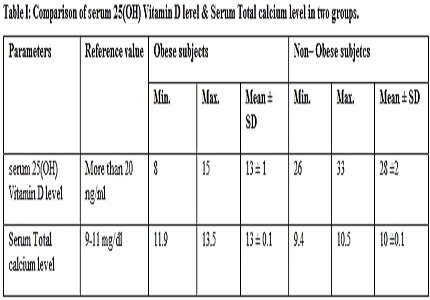Immunocytochemical staining of cervical smears – A comparative study with routine cytology for confirmation of precancerous and cancerous lesions of cervix
Abstract
Introduction: Carcinoma cervix is one of the leading causes of morbidity and mortality. The most effective method of screening is based on Pap smear study. However, Pap smear has relatively low sensitivity and irreducible false negative & false positive rates. In countries like India, it is not always feasible to follow the patient for confirmation by histology. In the present study, we have tried to fill this gap by staining the cervical smears with, epithelial cell markers including CK17 and CEA expressed by dysplastic squamous cells.
Materials & Methods: 50 cervical smears reported as precancerous or cancerous were stained with anti CK17 and anti CEA. The patients were followed for histopathology.
Results: Out of 20 cases of ASCUS, three were positive both for anti-CK17 and anti-CEA and six were positive for anti-CK17 only. Out of 18 cases of LSIL, nine were positive for both anti-CK17 and anti-CEA and fifteen were positive for anti-CK17 only. Out of eight cases of HSIL, three were positive for both anti-CK17 and anti-CEA and six were positive for anti-CK17 only. Out of 4 cases of SCC, three were positive for both anti-CK17 and anti-CEA and all four were positive for anti-CK17.
Conclusion: Positive result in staining was higher in high grade lesions. CK 17 was found to be better marker than CEA. CK17 and CEA can be used as adjunct to Pap smear screening but its high cost may restrict its use in routine.
Downloads
References
2. National Cancer Regitry Program. Annual Report. IC New Delhi; 1990-1996.
3. Mohammed Shaoaib Khan, Fohadiya Yasin Raja at el. Pap smear Screening for Precancerous conditions of the cervical cancers. Pak J. Med. Res.; vol. 44 no. 3, 2005:111-3.
4. Miller AB. Evaluation of the impact of screening for cancer of the cervix. IARC Sci Publ. 1986;(76):149-60. [PubMed]
5. Miller AB, Robles SC. Workshop on screening for cancer of the uterine cervix in Central America. Bull Pan Am Health Organ. 1996 Dec;30(4):397-408. [PubMed]
6. Miller AB, Nazeer S, Fonn S, Brandup-Lukanow A, Rehman R, Cronje H, Sankaranarayanan R, Koroltchouk V, Syrjänen K, Singer A, Onsrud M. Report on consensus conference on cervical cancer screening and management. Int J Cancer. 2000 May 1;86(3):440-7. [PubMed]
7. Franco E, Syrjänen K, de Wolf C, Patnick J, Ferenczy A, McGoogan E, Bosch X, Singer A, Muñoz N, Meheus A, Monsonego J. New developments in cervical cancer screening and prevention. Geneva, Switzerland, June 17-19 1996. Workshop. Cancer Epidemiol Biomarkers Prev. 1996 Oct;5(10):853-6.
8. Alliance for Cervical Cancer Prevention. “10 Key Findings and Recommendations for Effective Cervical Cancer Screening and Treatment Programs”, Cervical Cancer Prevention: Fact Sheet, April2007. Available at http://www.alliancecxca.org/files/ACCP_recs_2007_factsheet_final.pdf, last accessed January 8, 2010.
9. Adam E, Kaufman RH, Adler-Storthz K, Melnick JL, Dreesman GR. A prospective study of association of herpes simplex virus and human papillomavirus infection with cervicalneoplasia in women exposed to diethylstilbestrol in utero. Int J Cancer. 1985 Jan 15;35(1):19-26.
10. Nahleh ZA. Hormonal therapy for male breast cancer: A different approach for a different disease. Cancer Treat Rev. 2006 Apr;32(2):101-5. Epub 2006 Feb 10. [PubMed]
11. American Cancer Society. Cancer Prevention & Early Detection Facts & Figures 2009.
12. Jacobs MV, Snijders PJ, Voorhorst FJ, Dillner J, Forslund O, Johansson B, von Knebel Doeberitz M, Meijer CJ, Meyer T, Nindl I, Pfister H, Stockfleth E, Strand A, Wadell G, Walboomers JM. Reliable high risk HPV DNA testing by polymerase chain reaction: an intermethod and intramethod comparison. J Clin Pathol. 1999 Jul;52(7):498-503.
13. Solomon D, Davey D, Kurman R, Moriarty A, O'Connor D, Prey M, Raab S, Sherman M, Wilbur D, Wright T Jr, Young N; Forum Group Members; Bethesda 2001 Workshop. The 2001 Bethesda System: terminology for reporting results of cervical cytology. JAMA. 2002 Apr 24;287(16):2114-9.
14. Denny L. Cervical cancer: prevention and treatment. Discov Med. 2012 Aug;14(75):125-31. [PubMed]
15. Satija A. Cervical cancer in India. South Asia centre for chronic disease. [Accessed February16, 2014].
16. Arbyn M, Castellsagué X, de Sanjosé S, Bruni L, Saraiya M, Bray F, Ferlay J. Worldwide burden of cervical cancer in 2008. Ann Oncol. 2011 Dec;22(12):2675-86. doi: 10.1093/annonc/mdr015. Epub 2011 Apr 6. [PubMed]
17. Yeole BB, Kumar AV, Kurkure A, Sunny L. Population-based survival from cancers of breast, cervix and ovary in women in Mumbai, India. Asian Pac J Cancer Prev. 2004 Jul-Sep;5(3):308-15. [PubMed]
18. ICO Information Centre on HPV and cancer (Summary Report 2014-08-22).Human Papillomavirus and Related Diseases in India. 2014. [PubMed]
19. Yeoh GP, Russell P. Accuracy of Pap smear screening is community expectation unrealistic? Med J Aust. 1994 Dec 5-19;161(11-12):723. [PubMed]
21. Mihaela Grigore, Sergiu Teleman, Didona Ungureanu, Alina Mares. Molecular markers in cervical screening – a promise for the future. Revista Română de Medicină de Laborator Vol. 21, Nr. 2/4, June 2013.
22. Satyanarayana L, Asthana S, Bhambani S, Sodhani P, Gupta S. A comparative study of cervical cancer screening methods in a rural community setting of North India. Indian J Cancer. 2014 Apr-Jun;51(2):124-8. doi: 10.4103/0019-509X.138172.
23. Saha R, Thapa M. Correlation of cervical cytology with cervical histology. Kathmandu Univ Med J (KUMJ). 2005 Jul-Sep;3(3):222-4. [PubMed]
24. Smedts F, Ramaekers F, Robben H, Pruszczynski M, van Muijen G, Lane B, Leigh I, Vooijs P. Changing patterns of keratin expression during progression of cervical intraepithelial neoplasia. Am J Pathol. 1990 Mar;136(3):657-68.
25. Tendler A, Kaufman HL, Kadish AS. Increased carcinoembryonic antigen expression in cervical intraepithelial neoplasia grade 3 and in cervicalsquamous cell carcinoma. Hum Pathol. 2000 Nov;31(11):1357-62.
26. Toki T, Yajima A. Immunohistochemical localization of carcinoembryonic antigen (CEA) in squamous cell carcinoma of the uterine cervix: prognostic significance of localization pattern of CEA. Tohoku J Exp Med. 1991 Sep;165(1):25-32.



 OAI - Open Archives Initiative
OAI - Open Archives Initiative


